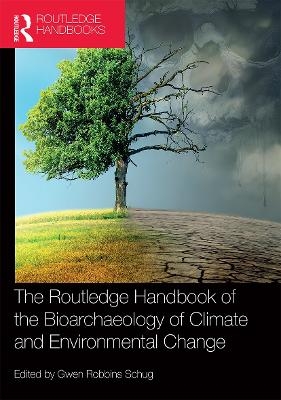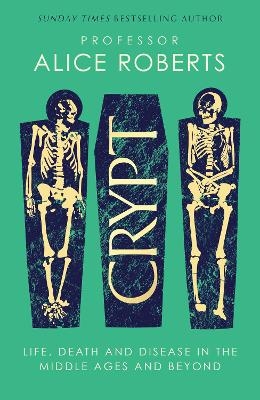
The Routledge Handbook of the Bioarchaeology of Climate and Environmental Change
Routledge (Verlag)
978-0-367-56038-6 (ISBN)
This handbook examines human responses to climatic and environmental changes in the past,and their impacts on disease patterns, nutritional status, migration, and interpersonal violence. Bioarchaeology—the study of archaeological human skeletons—provides direct evidence of the human experience of past climate and environmental changes and serves as an important complement to paleoclimate, historical, and archaeological approaches to changes we may expect with global warming.
Comprising 27 chapters from experts across a broad range of time periods and geographical regions, this book addresses hypotheses about how climate and environmental changes impact human health and well-being, factors that promote resilience, and circumstances that make migration or interpersonal violence a more likely outcome. The volume highlights the potential relevance of bioarchaeological analysis to contemporary challenges by organizing the chapters into a framework outlined by the United Nation's Sustainable Development Goals for 2030. Planning for a warmer world requires knowledge about humans as biological organisms with a deep connection to Earth's ecosystems balanced by an appreciation of how historical and socio-cultural circumstances, socioeconomic inequality, degrees of urbanization, community mobility, and social institutions play a role in shaping long-term outcomes for human communities.
Containing a wealth of nuanced perspectives about human-environmental relations, book is key reading for students of environmental archaeology, bioarchaeology, and the history of disease. By providing a longer view of contemporary challenges, it may also interest readers in public health, public policy, and planning.
Gwen Robbins Schug is Professor of Anthropology at Appalachian State University, USA.
1. A Bioarchaeology of Climate and Environmental Change Part I: Good Health and Well-Being 2. Exploring the Third Epidemiological Transition: Palaeopathology's contribution to understanding health and well-being today and for the future 3. Disease in the Context of Environmental Change 4. Living on the edge: Climate-induced micronutrient famines in the ancient Atacama Desert? 5. Climate change and adaptive systems in Bronze Age Gansu, China 6. Resources, stress, and response in Viking Age Iceland 7. Respiratory disease in the Middle Nile Valley: The impact of environment and aridification 8. Health and disease at the marshes: Deciphering human-environmental interactions at Roman Aventicum, Switzerland (1st-3rd century AD) 9. A bioarchaeology of social inequality and environmental change 10. Urban environments: Demography, epidemiology, and the role of climate change in determining health outcomes 11. Social variation in an urban environment and its impacts on stress: Preliminary results from ancient Greek Himera (Sicily) 12. Biocultural aspects of culture contact, exchange, and population movements in Cyprus 13. Resilience and change: A biocultural view of a Bedouin population in the emerging modern Middle East 14. A bioarchaeology of madness: Modernity, pellagra, and the rise of the manicomio system in the Veneto Region of Italy Part III: Peace, Justice, and Strong Institutions 15. Making sense of violence and environmental change in Europe 16. The climate change-witch execution connection: Living with environmental uncertainty on the Colorado Plateau (AD 800–1350) 17. Biological and cultural adaptations to climate change in prehistoric central California 18. Environmental, behavioral, and bodily change: Violence in the Late Intermediate Period (AD 1000–1450), North Chile 19. A diachronic view of violent relations and environmental change in the Titicaca Basin, Bolivia 20. Violence and climate change in the Jōmon period, Japan Part IV: Life on Land 21. Slouching toward the Neolithic: Complexity, simplification, and resilience in the Japanese Archipelago 22. A bioarchaeological perspective on trauma incidence in high altitude environments, Nepal 23. Climate and activity in Middle Holocene Siberia 24. Aridity and adaptation among Arabian Bronze Age communities: Investigating mobility and climate change using isotope analysis 25. Stable carbon and oxygen isotope evidence for late third millennium BCE environmental and social change at Titriş Höyük, an Early Bronze Age urban center in the Lower Turkish Euphrates watershed 26. Environmental dynamics and stable isotopic signatures in early Inner Asian Steppe communities 27. Human-animal entanglement and climate change: Multi-species approaches in Remote Oceania
| Erscheinungsdatum | 21.04.2022 |
|---|---|
| Zusatzinfo | 50 Tables, black and white; 19 Line drawings, black and white; 52 Halftones, black and white; 72 Illustrations, black and white |
| Verlagsort | London |
| Sprache | englisch |
| Maße | 174 x 246 mm |
| Gewicht | 743 g |
| Themenwelt | Geisteswissenschaften ► Archäologie |
| Sozialwissenschaften ► Ethnologie | |
| Sozialwissenschaften ► Soziologie | |
| ISBN-10 | 0-367-56038-0 / 0367560380 |
| ISBN-13 | 978-0-367-56038-6 / 9780367560386 |
| Zustand | Neuware |
| Haben Sie eine Frage zum Produkt? |
aus dem Bereich


